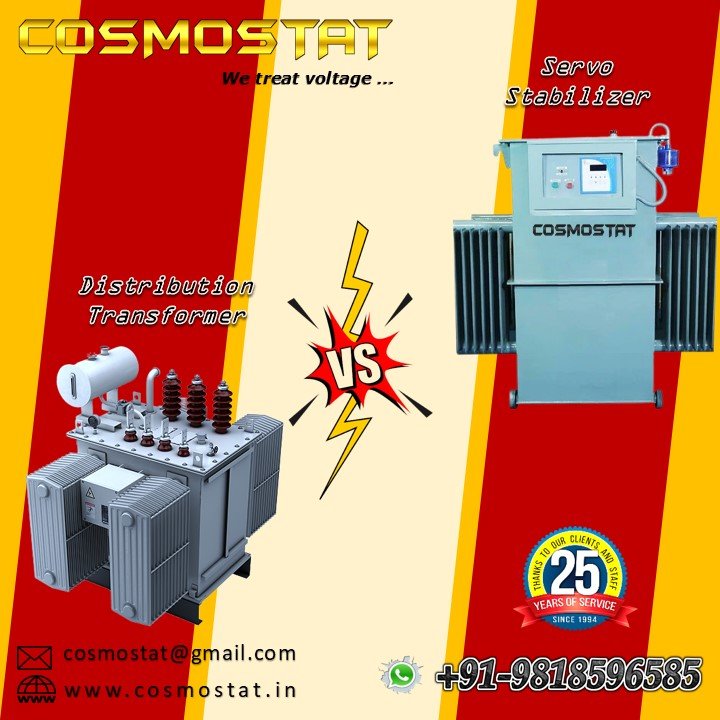
In electrical systems, both distribution transformers and servo stabilizers play crucial roles in ensuring efficient and reliable power supply. While they share some similarities, there are distinct differences between these two components. This article aims to provide a comprehensive understanding of distribution transformers and servo stabilizers, highlighting their functions, working principles, and applications.
Distribution Transformers:
Function: Distribution transformers are primarily responsible for stepping down high-voltage electricity from the transmission grid to lower voltages suitable for distribution to end-users.
Working Principle: They use electromagnetic induction to transfer electrical energy between the primary and secondary windings, resulting in voltage transformation and current isolation.
Applications: Distribution transformers are used in power distribution networks, substations, and industrial applications to ensure safe and efficient electricity distribution.
Servo Stabilizers:
Function: Servo stabilizers are designed to regulate and stabilize fluctuating voltages, providing a steady output voltage to protect sensitive equipment from voltage variations.
Working Principle: They use a servo motor-driven mechanism combined with automatic voltage regulators (AVRs) to continuously monitor input voltage and make rapid adjustments to maintain a stable output voltage.
Applications: Servo stabilizers are commonly used in areas with voltage fluctuations, such as commercial buildings, data centers, hospitals, and industries that require stable power supply for critical equipment.
Key Differences:
Purpose: Distribution transformers are primarily for voltage transformation, while servo stabilizers focus on voltage regulation and stabilization.
Voltage Range: Distribution transformers handle high voltage to low voltage conversion, whereas servo stabilizers operate within a specific voltage range to regulate and stabilize output voltage.
Load Handling: Distribution transformers handle the entire electrical load, while servo stabilizers are typically connected to specific equipment or systems that require voltage stabilization.
Response Time: Distribution transformers have no response time, while servo stabilizers respond rapidly to voltage fluctuations, providing near-instantaneous voltage correction.
Protection: Distribution transformers offer limited protection against voltage fluctuations, whereas servo stabilizers provide comprehensive protection by maintaining a constant output voltage.
Conclusion:
Distribution transformers and servo stabilizers are essential components in electrical systems, but they serve different purposes. Distribution transformers focus on voltage transformation for efficient power distribution, while servo stabilizers ensure a stable output voltage to protect sensitive equipment. Understanding their distinct functions and working principles is crucial for selecting the appropriate component based on specific application requirements. By choosing the right equipment, electrical systems can achieve reliable and stable power supply, ensuring optimal performance and protection for connected equipment.
